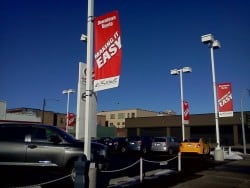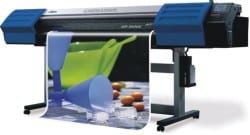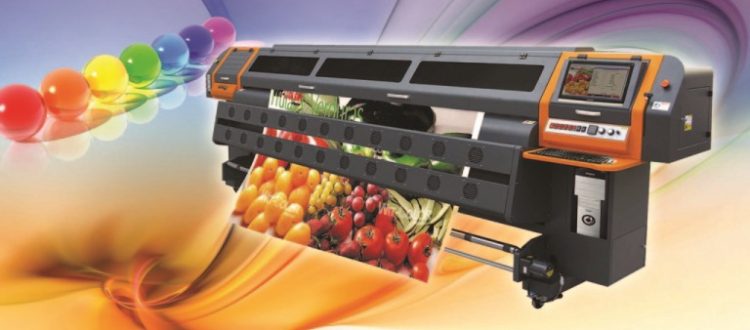Using sublimated banners outdoors. What are the substrates available for fabric printing. And, opting for dye sub displays.
Question: Why can’t dye sub printed banners or other items be used out-of-doors?
I am not sure exactly who fed that information to you, but it is absolutely and unequivocally untrue.
For instance, one of the most popular places to use dye sublimation printing is on snowboards. Another is light pole banners. There are several fabrics that can be used for display graphics outdoors at outdoor trade shows.
 Another place that dye sublimation printing is used is on gazebo covers. The top and edges can be printed with graphics and advertising, and dye sub printing will last a long time outdoors.
Another place that dye sublimation printing is used is on gazebo covers. The top and edges can be printed with graphics and advertising, and dye sub printing will last a long time outdoors.
Flags can also be printed using dye sublimation. It is very common to see nylon and polyester flags printed for outdoor usage that are flying from standard flagpoles with company graphics below your country’s flag.
So, yes, dye sublimation printing can most definitely be used on outdoor graphics as shown above.
Question: What items cannot be dye sublimation printed?
Anything that has not been treated with a polymer spray cannot be printed. It is the polymer spray that makes certain items like snowboards, glass, wood, or coffee cups printable with the dye sub method.
Natural fibers are also not printable using dye sublimation, because the pores of the materials such as cotton or linen are simply not polymeric (plastic, essentially) like polyester, nylon, or orlon.
Because of the plasticity of these materials, the heat and pressure applied to the married transfer paper and the synthetic fiber fabrics mentioned above, the cells will open up to accept the gaseous dye, then close again, sealing in the dye. This can’t happen with natural fibers, because they’re not plasticky like polymeric fabrics are.
So, most any item that has been treated with polymeric spray, or is a polymer material like plastic, it should be printable. Natural fibers, not so much.
Question: Why would I choose dye sublimation printed products?
Simply because of the superior photographic replication of any photo or graphic. Inkjet printing, for instance, sprays little dots of color onto a substrate, and is a good way to print decals or vinyl banners, but compared to dye sublimation with its continuous tones, it is simply no match quality-wise.
 It really starts with the process though. Dye sublimation printing uses a CMYO (cyan-magenta-yellow-overprint) dye ink that is initially printed digitally like inkjet ink. It is printed to a paper material creatively called “dye sublimation transfer paper.”
It really starts with the process though. Dye sublimation printing uses a CMYO (cyan-magenta-yellow-overprint) dye ink that is initially printed digitally like inkjet ink. It is printed to a paper material creatively called “dye sublimation transfer paper.”
This paper is then “married” to a polyester fabric and put through a machine that has heated rollers – at around 400º F. As the fabric and paper are run through the rollers, the dye under the heat and pressure becomes a gas, and the fabric’s pores open up, allowing the gaseous dye to flow into the open pores.
As the fabric comes out the far side of the rollers and cools, the pores close, permanently locking the color into the fabric in continuous tones of photographic color. That is why I would always choose dye sublimation if it is an option.
You can see more of dye sublimated fabric banner products at wholesale pricing, check this.
Popular Posts:




